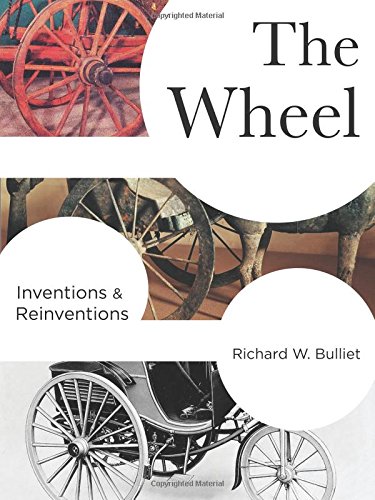
Anyone who enjoys reading about history should appreciate this book, “The Wheel: Inventions and Reinventions.” Myself, I like going back to the origins of things. It might be an English fellow messing around with the internal-combustion concept back in the 17th century — and using gunpowder as the fuel. Or somebody building a portable firearm, like a 14th century arquebus which evolved into today’s M4A1 carbine.
Or about wheels, and this book goes back some 6,000 years. Motorcycles are not much discussed, although there is a photo of a radical Harley chopper with an extremely raked-out front wheel. This in a section dealing with caster angles. Never heard of caster angles? Important invention. Think rake and trail.
We all have a pretty good idea of what a wheel is, and does, but perhaps we’re not too sure where it came from or how the devices that used it developed. Richard W. Bulliet, a recently retired professor at Columbia University, takes us back 6,000 years or so and says the first wheels used for transportation came from the copper mines in the Carpathian Mountains, a range which runs a thousand miles southeast from Poland to Romania. Of course, this differs from the notion that the wheel originated in Mesopotamia, but that is what academics like to do, present new ideas.
Miners were tunneling in, usually going straight and flat, perfect venue for wheels, unless one is on a serious motocrosser. Some bright light figured out that a tree trunk could be cut into wheel-like slabs, and soon four-wheeled carts were used to haul the copper ore out. The trick was devising a system that allowed the round bits to turn when supporting a box. Axles. I would have liked to hear more about how early axles worked, lubrication and such, but Bulliet is focused on wheels.
Wheels got more complicated. Spokes came along, and metal coverings keeping things together, and for a while two-wheeled chariots were the order of the day, being simple to build, and powered by horses. Some bright Roman thought up the idea of a four-wheeled wagon with a pivoting front axle, good for carrying heavy stuff. However, as far as transporting people went, wagons were too darn uncomfortable. Imagine jouncing along a Roman road paved with large stones.
Around the year 1600, carriages with some sort of suspension began to be popular. However, roads, or the lack of them, were the main hindrance in the development of wheels. It is on record that in 1703, a carriage traveling south of London tipped over 12 times — and that with a Hapsburg emperor on board. In the late 1700s, a Scotsman named John MacAdam came up with the idea for the modern road, having a smooth surface over a base of small stones.
The notion of a bicycle, with wheels fore and aft, began around 1800, with center pivot steering arriving in 1871. The first safety bicycle, with roughly equal-sized wheels and a chain drive, did not appear until the 1880s — and soon a motor was attached. But how did this contraption steer? With front forks, a steering head, and a caster angle.
Bulliet does a good deal of wandering in his book, spending two chapters on the wheel in China, and describing children’s wheeled toys in pre-Columbian America. If you are interested in the history of that round object, “The Wheel” is a good read. Despite some rather professorial prose. The book is available from Columbia University Press for $27.95, or via Amazon for a bit less.







